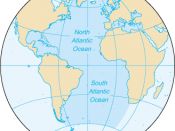Biography
Born on November 1, 1880, Alfred Lothar Wegener earned a Ph. D in astronomy from the University of Berlin in 1904. He had always been interested in geophysics, and also became fascinated with the developing fields of meteorology and climatology. During his life, Wegener made several key contributions to meteorology. In 1914 he was drafted into the German army, but was released from combat duty after being wounded, and served out the war in the Army weather forecasting service. After the war, Wegener returned to Marburg, but became frustrated with the obstacles to advancement placed in his way; in 1924 he accepted a specially created professorship in meteorology and geophysics at the University of Graz, in Austria. Wegener made what was to be his last expedition to Greenland in 1930. While returning from a rescue expedition that brought food to a party of his colleagues camped in the middle of the Greenland icecap, he died, a day or two after his fiftieth birthday.
The Plants and Animals Match/ Climate
Wegener noted that plant fossils of late Paleozoic age found on several different continents were quite similar. This suggests that they evolved together on a single large land mass. He was intrigued by the occurrences of plant and animal fossils found on the matching coastlines of South America and Africa, which are now widely separated by the Atlantic Ocean. He reasoned that it was physically impossible for most of these organisms to have travelled or have been transported across the vast ocean. To him, the presence of identical fossil species along the coastal parts of Africa and South America was the most compelling evidence that the two continents were once joined. Wegener also found that the fossils found in a certain place often indicated a climate utterly different from...


